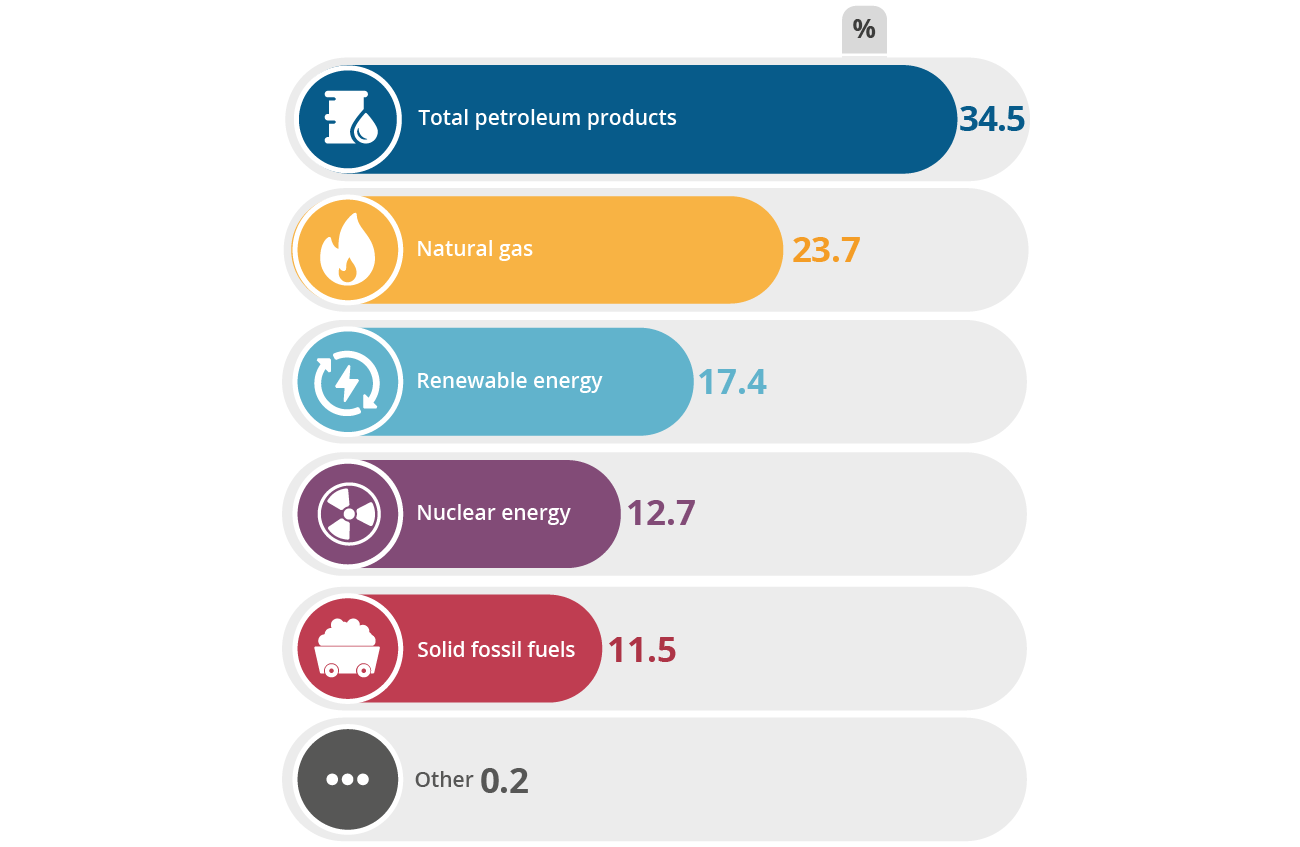With the exception of the drop caused by the COVID-19 pandemic, Europe’s steady emission reductions have been achieved thanks to sound climate policies, according to the EEA’s latest ‘Trends and projections’ assessment.
However, achieving the 2030 and 2050 targets will require EU Member States to be even more ambitious in their actions. As part of the European Green Deal, the European Climate Law sets a new net reduction target of at least 55% by 2030 and the commitment to achieve climate neutrality, meaning that any residual emissions are offset by an equivalent quantity of carbon dioxide removals by 2050. Moreover, Russia’s invasion of Ukraine has highlighted the need move away from fossil fuels towards renewable and domestic sources that can ensure energy security.

The REPowerEU plan sets out a series of measures to rapidly reduce the EU’s dependence on Russian fossil fuels by accelerating the clean energy transition. As part of this plan, the European Commission proposes to increase the target for renewables to 45% by 2030 and increase energy savings from 9% to 13%, compared with a 2020 EU reference scenario.
Making progress towards 2030
According to the EEA’s latest estimates, the EU’s net greenhouse gas emissions, which account for carbon absorbed, for example, by forests, were about 28% lower in 2021 than in 1990. Faster and deeper emission reductions are therefore needed if the EU is to achieve the 55% target by 2030.
Moreover, the EEA’s ‘Trends and projections’ analysis shows that Europe needs to continue investing in renewable sources of electricity, and that renewable sources need to account for a much larger share of the energy used for heating, cooling and transport. At the same time, it is important to avoid the use of coal or lignite as a substitute for gas in the energy sector.
Perhaps most urgent is the need to reduce energy consumption more quickly. Reaching the EU’s 2030 energy efficiency target will require much faster cuts than those achieved between 2005 and 2020. Expanding district heating and cooling, installing heat pumps and improving building insulation would support these goals, but efforts are needed across all economic sectors, together with changes in citizens’ private use of energy, such as turning down thermostats during the winter and using less air conditioning during the summer.
Europe’s energy mix today
According to the latest comprehensive data, from 2020, the total energy available in the EU comes predominantly from five different sources: petroleum products, including crude oil (about 35%); natural gas (24%); renewable energy (17%); nuclear energy (13%); and solid fossil fuels, such as coal (12%).
However, there are significant differences between EU Member States. For example, petroleum products accounted for more than 85% of the total energy available in Cyprus and Malta in 2020. Natural gas accounted for 40% of the total energy available in Italy, nuclear energy for 41% in France, and renewables for almost half of the total energy in Sweden.
The energy mix of a country is shaped by several factors, including the availability of domestic resources, such as forests and other biomass, and rivers, or good potential for wind or solar power. Past choices lock countries into certain technologies over many decades, and connectivity to large energy networks, as well as relations with neighbouring countries, affect the options available for exports and imports.
Read more: EEA briefing about cross-border cooperation on renewable energy.
In 2020, about 42% of the total energy available and consumed in the EU was also produced in the EU. The rest — almost 60% — was imported. Russia has long been the single largest supplier of the EU’s energy imports. In 2020 it supplied 29% of crude oil, 43% of natural gas and 54% of solid fossil fuels, mostly coal, used in the EU. Moreover, some EU Member States have been more dependent on Russian energy than others, making them even more vulnerable to energy shortages and price hikes.


Source: Eurostat (https://ec.europa.eu/eurostat/cache/infographs/energy/bloc-2a.html).
Staying on target, moving faster
The European Green Deal was announced in 2019 to pave the way to sustainability through a socially just transition. The importance of that basic goal has only been reinforced by the COVID-19 pandemic and the war in Ukraine.
The EEA’s assessments have consistently shown that Europe’s systems of production and consumption need to shift rapidly towards sustainability. In the energy system, this means both reducing energy consumption and increasing the share of energy from renewable sources to cut the use of fossil fuels.
Moreover, moving to a more circular economy — reducing and optimising the use of materials — would support Europe’s climate and energy objectives. Keeping products and materials in use for longer or using more recycled materials could deliver significant sustainability benefits.
Achieving these goals would cut Europe’s greenhouse gas emissions and pave the way to achieving climate neutrality by 2050. The benefits of saving energy are clear and immediate, not least for household budgets. Switching to renewable energy for electricity generation offers multiple benefits beyond reduced greenhouse gas emissions, such as cleaner air, water and soils.

Source: EEA greenhouse gas emissions data viewer (https://www.eea.europa.eu/data-and-maps/data/data-viewers/greenhouse-gases-viewer).



Document Actions
Share with others